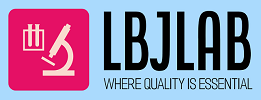
Phlebotomist Course Part 1
DrG
Course Overview
This course is partly taken from College of American Pathologists (CAP) MediaLab and developed as a training course for students who are aiming to become a professional Phlebotomy Technician or Phlebotomist.
Authors and Contributors Information:
Carol Becker, MS, MLS(ASCP)CM is a retired Program Director for the Clinical Laboratory Science program and Histology program at OSF St. Francis Medical Center located in Peoria, Illinois. Carol received her Master’s degree at the University of St. Francis in Joliet, Illinois and her Bachelor’s degree in Medical Laboratory Science from the University of Illinois in Champaign, IL.
Cheryl Bentley, MLS(ASCP)CM received her degree in Medical Laboratory Technology from Clayton State University in Morrow, Georgia. Cheryl began her career as a generalist at Henry Medical Center in Stockbridge, Georgia and is currently the Clinical Laboratory Supervisor at Gwinnett Medical Center in Duluth, Georgia.
Rob Nickla, RBP, M(ASCP), began his public health career in 2004 at the Arizona State Public Health Laboratory (ASPHL), working in Mycobacteriology, Bacteriology, and Virology. While there, he became the State Training Coordinator and Bioterrorism Training Coordinator in the Bioemergency Response Section and actively participated in several APHL Special Interest Groups for Basic Microbiology, Biosafety & Biosecurity, and Select Agent Training. He served on the ASPHL Safety Committee for several years and helped develop and conduct many in-house safety-related trainings.
Varghese Finney, MLS is a senior medical technologist at LBJ Tropical Medical Center Laboratory who retired from his many years of laboratory work at Harris Health Systems in Houston Texas. He received his Bachelor’s degree in Medical Technology from Texas Southwestern University in 1997.
Reviewer and Editor:
Amor Gonzales, MD (LBJLab Askdrg.Online Administrator)
What You'll Learn?
- Describe the job function of a phlebotomy technician or phlebotomist.
- Enumerate the roles of phlebotomy technician in the clinical laboratory and as a team member of a health care institution.
- Describe the characteristics of phlebotomy technician as a member of health profession.
- Describe professionalism and ethical or legal issues concerning any forms of communication when dealing with patients or clients.
- Describe appropriate approach to patient-centered environment and recognize the importance of proper patient preparation, positive patient identification, and pre-collection requirements prior to safe venipuncture or sample specimen collection.
- Identify the knowledge needed to meet standard requirement for this profession.
- Address appropriate safety measures for self, patient or client, co-workers, people around, and the environment in the process of performing venipuncture or any other laboratory procedures and the handling of sample specimens.
- Phlebotomist Trainee
- Phlebotomy Technicians or Phlebotomists (PBT)
- Medical Laboratory Assistants (MLA)
- Medical Laboratory Technicians (MLT)
- Medical Laboratory Scientists (MLS)
- Medical Laboratory Students and Interns
- Minimum: High school graduate with interest to serve patients through clinical laboratory health science
Course Content
- Getting Started
- Introduction
- Professionalism and Ethics
-
Clinical Laboratory US Federal Law
-
Phlebotomy Professionalism and Ethics
-
Approach to Patients in a Patient-Centered Health Environment
-
Verbal and Non-Verbal Communication
-
Electronic Communication
-
Barriers to Communication
-
The Effect of Cultural Differences on Communication
-
Strategies for Managing Patients with Difficult Behaviors
-
Post-Learning Exercises 1
-
- Knowledge Requirement
- Safety and Infection Control in Laboratory
- References
